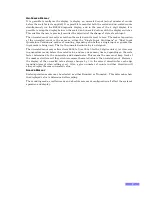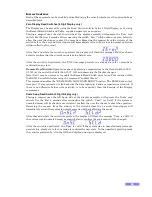
15
Calibration Check Procedure
Checking the calibration is correct:
1.
Verify that the mechanism and sensors (or sensor if only 1 input is being used, and it is
not necessary to use quadrature) are operating correctly.
2.
Check the display is reading 0. Zero the display if not.
3.
Check the display is not displaying an unscaled value. In the unscaled operating mode
the count is preceded by ‘u’ in the left hand digit and no sign is displayed.
4.
Operate the system over a set number of complete turns or known number of unit lengths
for distance, whichever is appropriate to the application.
Ensure the direction of travel is that intended to be used for a positive count
when using a quadrature system.
Ensure the start and finish points are precisely marked and aligned both before and after
to ensure the calibration check procedure is accurate.
For example, with a torque tool, mark both the outer body and the drive socket as aligned
with the display reading 0 and ensure the tool is stopped at precisely the same point.
10 is a reasonable number of turns for a torque tool, but more turns will give a more
accurate calibration, particularly if the tool is intended to be used over many hundreds of
turns.
5.
Record the displayed value (
the scaled count
). (This may also be read from the console
interface if still connected).
The scaled count should precisely agree with the operation carried out to the displayed
precision.
6.
Now repeat step 4 in the reverse direction to check the counting mechanism / sensor
alignment is operating correctly in both directions. Do not zero the display if using a
quadrature system.
7.
The display should return to exactly 0 which is indicated by no sign display on 4 digit
units, or a flashing on 2 digit units. See Zero Display modes on page 17.
e.g. [4]
The following is an example of checking the calibration of a torque tool turns
counter displaying to 2 decimal places
1.
Verify mechanism operation
2.
Check display is zero
3.
Check the display is scaled
4.
Operate the tool over precisely 10 turns clockwise (intended positive)
5.
Record a displayed value of +10.00
6.
Operate the tool over precisely 10 turns counter clockwise (intended negative)
7.
Record a displayed value of 0.00
Both recorded values were exactly right.
The calibration is good.






























